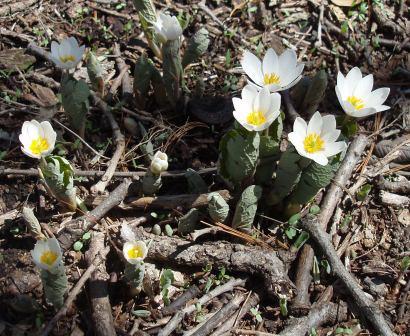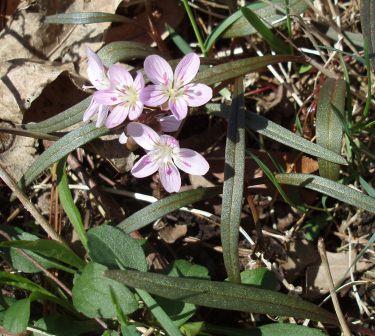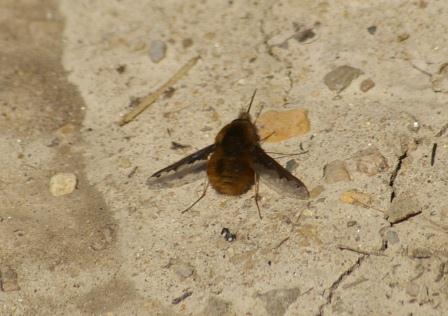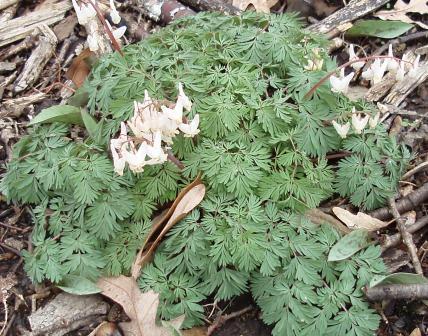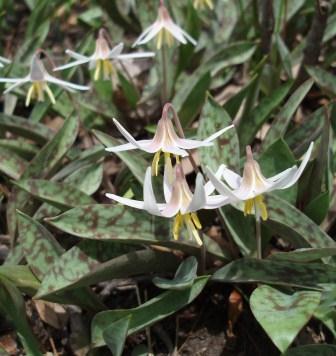by Carl Strang
Recently I saw the first bee flies of the season at Mayslake Forest Preserve. Sources agree that the common species in North America, including northeast Illinois, is Bombylius major.

They are remarkable looking, with their densely hairy round bodies and long, needle-shaped proboscis. The proboscis is not for biting people, but for probing flowers. One of the ones I saw in late April was visiting spring beauty flowers south of May’s Lake. They are active early in the season, when conserving the heat from the muscles that power their blurring wings would be a valuable property of that fur-like body covering. Here is another, photographed from behind at an angle.

It was hovering over the trail, holding still long enough for me to take this tele-macro photo, and also to lead me to think there was some kind of displaying or patrolling taking place. Looking back at my brief dossier on the species, I see that I have observed this behavior before.
5MY87. Showing territorial behavior on paths of Willowbrook Back 40. Rest on ground, occasionally move into hovering flight, patrolling small area or chasing others.
8MY87. Still territorially active, also 14MY.
12AP88. First one of the season seen at Willowbrook.
Returning to the photo, I see that the wings were moving too rapidly for my equipment to catch. I’m interested in the legs that are sticking out in an odd asymmetry: what’s with that, I wonder? Another question for the file.
According to my references, the larvae are parasites of ground-nesting bee larvae.
I should add the caveat that my identification is not based on the keying out of collected specimens. All the references I have at my limited disposal point to these insects being Bombylius major. They have the long proboscis, the round yellow-haired bodies, the same black pattern on the wings, and the correct body size as shown in references. They are widespread and common every spring in DuPage County. If there are other similar species of bee flies that need to be considered, I would appreciate hearing about it.





